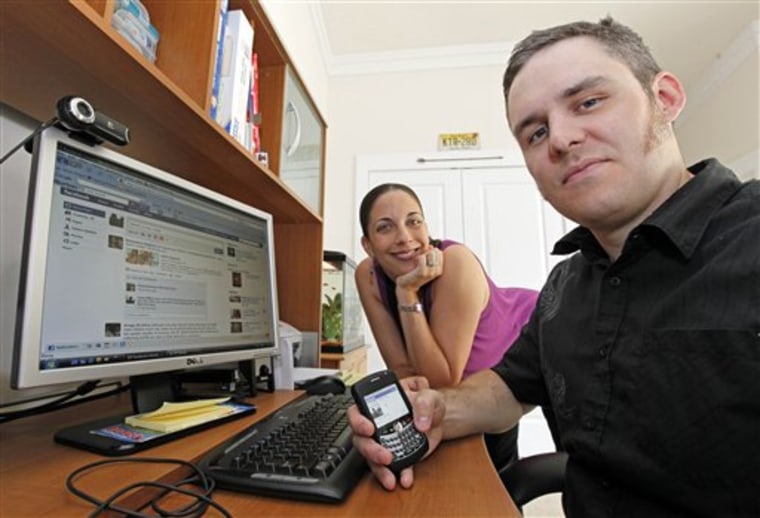Stephanie Kahn wanted to bask in her engagement for a few hours before diving into the task of calling aunts, uncles and good friends with the big news. And even before she could call them, she had a surprise party to attend, one that her fiance had set up for their parents and her "closest group of girlfriends."
That party was when Kahn lost control of her news. Some of the guests took photos and were "uploading them on Facebook before I could even post anything," Kahn said from Smyrna, Ga., where she lives. "Of course the next morning I get a couple of calls, text messages from people I didn't call. They found out on Facebook. I think some people were a little upset."
In an age in which instant news and constant life streams from Facebook and Twitter change the way we communicate, the rules of etiquette surrounding these interactions are still evolving.
What happens when I expected a phone call about something and read about it in a status update instead? What's the polite response to a distant friend posting bad news on Facebook? What to do with sensitive information?
Making matters trickier, good etiquette on Facebook might not apply on Twitter or in an e-mail. These days, milestones like marriage, pregnancy, breakups and divorce are being described over more forms of communications than ever.
"Because it's so new, there is sort of a gray area of what the manners are," said Brian McGee, a 33-year-old father-to-be in Charlotte, N.C.
He'd just gotten his first BlackBerry when he and his wife were driving to a doctor's appointment to learn the baby's sex. He had the BlackBerry out and was thumbing something.
"I was like, `What are you doing?' recalled his wife, Megan Gelaburt-McGee. "He was posting that we were on the way to the doctor's office to find out the baby's sex. I said, `Don't post that!'"
She said she wanted to tell her close friends the baby's gender personally, though she didn't mean an in-person visit. She didn't even mean a phone call. Instead, she drew the universal female symbol on her belly, had a friend take a photo and sent it in an e-mail to as many as 20 people: cousins, aunts and uncles, bridesmaids, friends she'd known for a very long time.
"We (weren't) going to keep the sex of the baby a secret," she said. "But I don't want to have my cousin find out through Facebook."
Online social networks haven't been around long enough to develop hard and fast etiquette rules, but general guidance is emerging. Just as most people learned that it's annoying to yell on a cell phone in public or to hit "reply all" when responding to just one person in a mass e-mail, social media-savvy folks are finding it's unwise to, say, post unflattering images of friends without their consent.
Etiquette adviser Anna Post, the great-great-granddaughter of manners icon Emily Post, recommends taking a step back before rushing to type, whether it's good news about you or a response to someone else's bad news.
Indeed, tweets and status updates posted in the heat of a moment can quickly backfire. In July, a New York City government aide resigned after posting inflammatory Facebook comments about the arrest of Harvard professor Henry Louis Gates Jr. The aide, Lee Landor, had called Gates a racist and referred to President Barack Obama as "O-dumb-a." The lesson? Know your audience, especially if they will complain to your boss.
A decade or two ago, communicating important news electronically rather than in a letter was frowned upon. Now an e-mail is considered acceptable for many situations, but even people comfortable with that might draw the line at social networks, which feel more like public or semipublic venues.
After all, the average person has 120 "friends" on Facebook, according to the company. In real life, the average North American has about three very close friends and 20 people they are pretty close to, said Barry Wellman, a sociologist at the University of Toronto. This means people may sometimes forget just who is reading their status updates, and can let their guard down.
"The word Facebook uses, `friend,' of course isn't true," Wellman said. "Many people Facebook calls friends are not friends but maybe acquaintances or former friends."
Facebook has done some studies on how people decide what information they share and how to share it. In one, Cameron Marlow, a research scientist at Facebook, explored with his team what tends to dictate the number of photos that people upload on the site. It turns out the number wasn't based on how many of their friends showed approval for the photos by clicking that they liked them, or how many comments were left on each.
"Rather, it was based on how many photos your friends uploaded," he said. "Social norms are constantly being developed based on what friends do."
